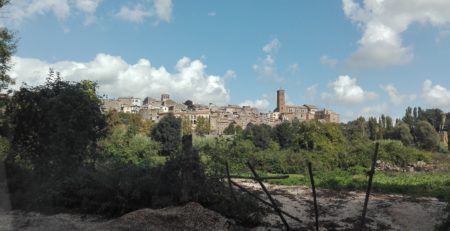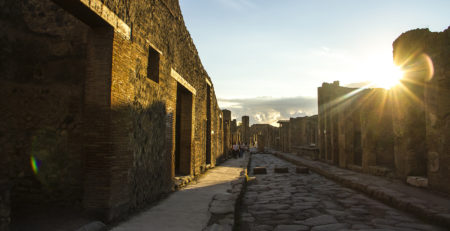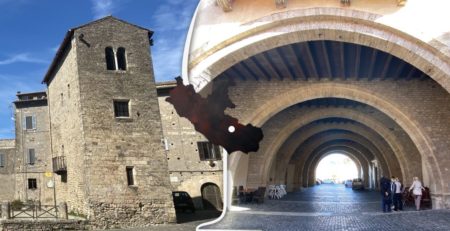Italian dishes you may want to try on your next trip to Italy
Everybody knows Italian food: mozzarella cheese, pastas, world-class wine but there’s so much more to Italian dishes.
Most of the “stranger” Italian dishes were created out of necessity. By using the entire animal or buying the off-cuts, Italians throughout the centuries could save money and still eat a nutritious meal. They still refer to this type of cooking as cucina povera, or “poor cooking”. The recipes are local and come from what was readily available throughout the country’s history.
Which dishes would you be willing to try?
Amatriciana Romana
Delicious Roman dish with sprinklings of guanciale, or pork cheek, on top. Italians are big pork eaters, but pork actually goes into a lot of Italy’s most esoteric cuisine.
For example, Roman amatriciana pasta with guanciale, or pork cheek, the cassouela from Lombardy which uses pork snout, ears and feet. Abruzzo – a region with cold winter temperatures and a history of rural life – eat the feet, ears, tail, snout, and pork rinds with bay leaves, garlic, rosemary and chili peppers. If this is making you a bit squeamish, remember that you’ve probably eaten a lot of these things before in the form of salumi, or cured pork.
Tripe and other cow organs
piles of tripe in an Italian butcher are some of Italy’s most esoteric cuisine.Tripe can be pretty rubbery when it’s fresh – nothing that a good long stewing won’t help.
Of Italy’s most esoteric cuisine, perhaps the most foreign to some are tripe and organs. We’re not talking about your grandmother’s famous liver dish – the Italians go much farther than that. Regional dishes exist throughout all of Italy featuring different cow organs. Try a classic veal tongue, boiled, sliced and seasoned in Liguria or Piemonte. Or try the ever-popular panino con la milza (pani câ meusa in the local dialect) from Palermo, Sicily. This is a sandwich filled with veal spleen and lung that’s been boiled and fried. You can ask for cheese added if you’d like.
Tripe is the white, rubbery lining of the cow’s stomach. It’s cooked in various ways, but most often put together as a hearty soup. Called trippa in Italian, this dish is typical of many Italian regions, but especially in Lombardy, Lazio and Tuscany. One particular Tuscan tripe dish is called Lampredotto, with Florentine tripe eaten in sandwiches with green sauce or hot sauce.
Sea urchin and raw octopus
The more curled the tentacles are, the more tender the octopus meat.
Anyone who has had sushi is used to eating raw seafood, but Japan isn’t the only country with a culture of raw fish in its cuisine. Down south in Puglia the consumption of local seafood is so widespread, that the government enforces no-fishing periods to help repopulate the waters. For the Pugliese, the best way to eat all that fresh seafood is to eat it right away!
The most popular raw seafood dish, and easily one of Italy’s most esoteric foods, is the sea urchin. Inside that hard, spiny exterior is a delicious orange organ that is actually…wait for it…the sea urchin’s gonads. Second only to the sea urchin is raw octopus. Considered a specialty, the fishermen follow a precise procedure to clean the octopus. They remove its internal organs, pound it against a rock to tenderize it and stir it for an hour to cause the tentacles to curl, relaxing the nerves and making the octopus meat extra tender. This specific dish is called pulpe rizz, or octopus curl.
Ox Tail Soup
Ox-tails are a unique cow part. Like the brisket and shoulder they are active muscles and well marbled with collagen (but not much fat), however, because the tail’s main job is swatting flies, unlike the shoulder and brisket it’s not a load-bearing body part. So lots of flavor and not overly tough. In addition, while the stew cooks the collagen melts and so does the marrow in the bones producing a wonderfully silky sauce. Delicious served over pasta or as a soup in the winter time.
Cotechino
The cotechino is an Italian charcuterie product, similar to salami, but requiring cooking, usually it is boiled at low heat for about four hours. Its name comes from cotica (rind), but it may take different names in the different production areas.
Traditionally, it is served with lentils on New Year’s Eve, because lentils, due to their shape, are ‘credited’ to bring money for the coming year.
Want to learn more about what the Italians eat, and their secret delicious recipes?
















